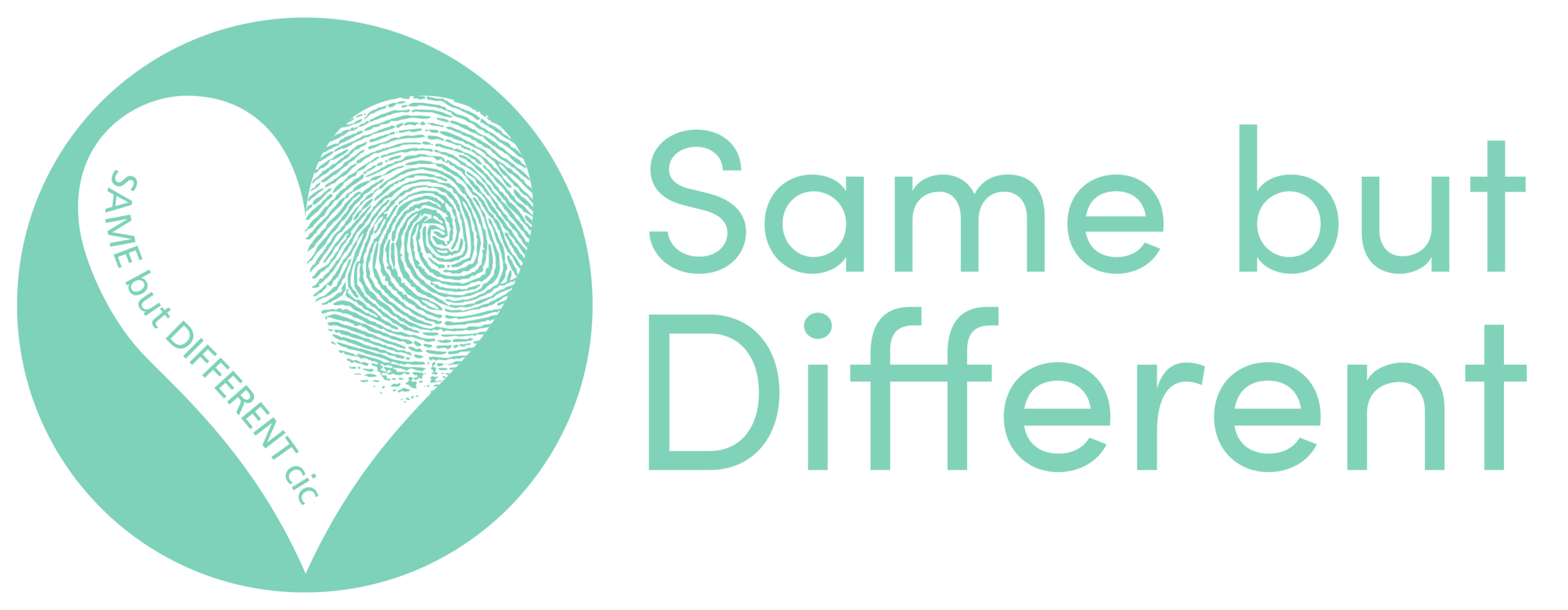Jacob
“Jacob is a happy, lively, little boy who loves being involved with everything”.
Jacob and his family came to the studio to talk about their experience of his rare disease.
“Jacob has something called X-linked Hypohidrotic Ectodermal Dysplasia. It affects his ectodermal layer which means he can’t sweat and so it is hard for him to regulate his body temperature. He overheats in the summer when it’s hot and in the winter, if it’s very cold, he can’t warm himself up as we would. It has also affected his teeth. He has four top teeth and three bottom teeth, most of which are misshapen and pointed. He wears a little denture on his top set to help him with eating. Having no pigment behind his retina means he wears sunglasses when he’s out and about because he is so sensitive to light. He also has eczema and so I can be putting creams on him up to five times a day.
“I had never heard of his condition until he was diagnosed but I have been able to connect with other families via Facebook and that has helped. ”
“When Jacob was 18 months old, he still had no teeth, so I took him to the dentist; she was concerned enough to refer us to Alder Hey hospital. Whilst waiting for the appointment, I did my own research and found children with similar symptoms and facial features. I went to see the locum GP but he sort of laughed at me really and thought I was being silly. I went back a week later and saw my own GP and she agreed that there were signs and referred him for genetic testing. Both the team at Alder Hey and genetic tests confirmed the diagnosis. Unusually, his condition is a random first mutation because I am not a carrier”.
“Sometimes he gets upset because if it’s too cold he can’t go outside to play at school and the same is also true if it is very warm. His friends are very accepting as to them he is just Jacob. I worry about the future and how it will be when he starts at high school. That’s when he’s going to realise he is different. It is so important that people are aware that not everybody is the same and that you can be different but still lead a normal life.”
“It is really important for Jacob to know he’s not on his own and that it’s ok to be different and still get on with life.””
“On a day to day basis he must have his creams put on and needs to wear his sunglasses. Eating can be hard work and so he is a bit slower. His food has to be chopped up smaller and quite soft really. We try and encourage him to be as active as possible but have to watch to make sure he isn’t getting too hot. He has a cooling jacket that he wears when playing and often on a hot day we wet his clothing. In the winter you just layer him up, t-shirts, jumpers, coats, gloves, hats, two or three pairs of gloves sometimes. We always need to be alert to his changing temperature.”
FIND OUT MORE
X-linked Hypohidrotic ectodermal dysplasia
Hypohidrotic ectodermal dysplasia (HED) is a rare inherited multisystem disorder that belongs to the group of diseases known as ectodermal dysplasias. Ectodermal dysplasias typically affect the hair, teeth, nails, sweat glands, and/or skin. HED is primarily characterized by partial or complete absence of certain sweat glands (eccrine glands), causing lack of or diminished sweating (anhidrosis or hypohidrosis), heat intolerance, and fever; abnormally sparse hair (hypotrichosis), and absence (hypodontia) and/or malformation of certain teeth. Many individuals with HED also have characteristic facial abnormalities including a prominent forehead, a sunken nasal bridge (so-called "saddle nose"), unusually thick lips, and/or a large chin. The skin on most of the body may be abnormally thin, dry, and soft with an abnormal lack of pigmentation (hypopigmentation). However, the skin around the eyes (periorbital) may be darkly pigmented (hyperpigmentation) and finely wrinkled, appearing prematurely aged
To find out more about Hypohidrotic ectodermal dysplasia, click here.
Source: https://rarediseases.org/rare-diseases/hypohidrotic-ectodermal-dysplasia/
facebook support groups
As mentioned in the article above, support groups exist for Hypohidrotic ectodermal dysplasia via facebook, click the link below to find out more about the NFED’s facebook page:
National Foundation for Ectodermal Dysplasias (NFED): https://www.facebook.com/NationalFoundationforEctodermalDysplasias/?ref=search&__tn__=%2Cd%2CP-R&eid=ARCTTNKOvIHUNavmilj5rTMcdrGJMxSvMN_jQrn5w1RKXUDCD_shPWiXrBeGHUbUlroO3oyOvCJOof0I
Don't forget to visit and 'Like' our Facebook page too so we can keep you up to date with our new rare stories by clicking here



